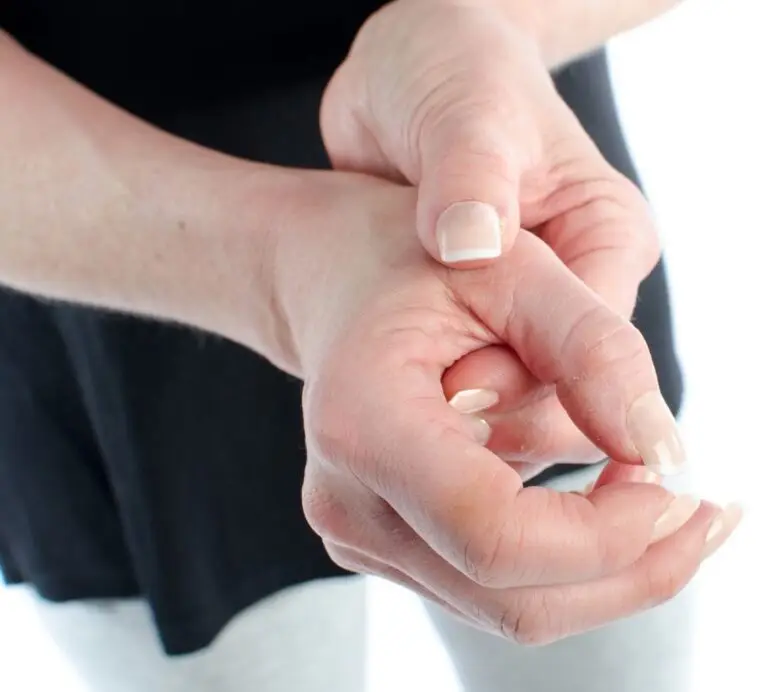Blog
Understanding DeQuervain's Tenosynovitis

Causes, Symptoms, and Treatment Options
Introduction
DeQuervain’s Tenosynovitis is a painful condition affecting the tendons on the thumb side of your wrist. The pain and discomfort in your wrist and thumb can make even simple tasks feel daunting, but with proper care and treatment, relief is possible. If you’re experiencing discomfort and swelling in this area, our experienced osteopaths at Completely Aligned are here to help manage your symptoms and improve your hand function. Call us at 02 4655 5588 to book an appointment. But in the meantime, since knowledge is power, let’s learn about what’s happening in your hand.
What is DeQuervain’s Tenosynovitis Exactly
(And Why the Big Name)?
De Quervain’s Tenosynovitis is named after the Swiss surgeon Fritz de Quervain, who first described the condition in 1895. Dr. de Quervain identified and documented the painful inflammation of the tendons and their sheaths on the thumb side of the wrist, leading to the naming of the condition in his honour. This inflammation affects the tendons, and importantly the sheaths of tissue that they run through, of the abductor pollicis longus (the muscle responsible for moving the thumb away from the hand) and extensor pollicis brevis (a muscle that straightens the thumb at the joint closest to the hand) causing pain and swelling in the wrist and thumb area.
Repetitive strain injury is often the culprit: it is common among people who perform tasks that require frequent thumb and wrist movements, such as new parents lifting their babies, musicians, or individuals who engage in certain sports (such as tennis or fencing) or manual labour (such as painting, gardening or carpentry.) But it can also be caused by inflammatory conditions, pregnancy and postpartum hormones (mixed in the RSI of new parenthood we mentioned), or direct trauma. Whatever the cause – it’s not a lot of fun.
Symptoms of DeQuervain’s Tenosynovitis
Common symptoms include pain near the base of the thumb, swelling near the thumb, difficulty moving the thumb and wrist when doing activities that involve grasping or pinching, and/or a sticking sensation in your thumb when you move it (when you know you know). You might have noticed a thumb theme here…
What Can We Do?
Now that you have a good grip on your condition (pardon the pun) let’s get to the good news. What can be done about it? The osteopaths at Completely Aligned will use soft tissue massage and mobilisation techniques, as well as photobiomodulation therapy (PBMT). The aim here to reduce discomfort and swelling and promote healing. We’ll also prescribe specific exercises to improve the range of motion in your thumb and wrist and advise you on ergonomic modifications to help you avoid further injury. Often, this is enough. But if conservative treatments don’t provide relief, you might consider surgery to release the pressure on the tendons. We’re here for you then too to provide pre and post-operative recovery care. Why does it matter? Before surgery, optimising your hand and wrist function can lead to better outcomes. After surgery, proper care can help reduce scar tissue formation, improve mobility, and accelerate your recovery.
Conclusion
DeQuervain’s tenosynovitis can be a debilitating condition, but with the right treatment, you can manage your symptoms and regain function. At Completely Aligned, our osteopaths are dedicated to helping you find relief through non-invasive techniques. To book an appointment call us at 02 4655 5588 or book online here.
Stay connected with us on social media for more health tips and updates. We’re on Facebook https://www.facebook.com/completelyaligned and Instagram https://instagram.com/completelyaligned.. We look forward to supporting you in achieving a pain-free, active life.
Information provided here (including text, graphics, images, outbound links, and other material) is for informational purposes only. It is general in nature and is not to be used or considered as a substitute for personalised professional medical advice, diagnosis, or treatment. Always seek the advice of your qualified allied health provider regarding any symptoms, medical conditions, or treatments and before undertaking any new health care regimen.
References
Physiopedia [ND] De Quervain’s Tenosynovitis. [Online] Available at https://www.physio-pedia.com/De_Quervain’s_Tenosynovitis?utm_source=physiopedia&utm_medium=search&utm_campaign=ongoing_internal. Accessed on 31/05/2024.
Latest:
We're ready when you are
Don't let pain hold you back from doing the things you love
At Completely Aligned, our door is always open for you to get back to doing the things you love in life. Our team are available now to chat with you and work out how we can best support you.



